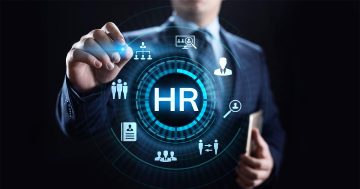Riia O’Donnell* says employers are finding innovative ways to dig into treasure troves of data and use their findings to improve their employees’ experience.
 HR is beginning to realise the value of the massive amounts of data in their possession — and they’re finding ways to mine for treasure hidden within.
HR is beginning to realise the value of the massive amounts of data in their possession — and they’re finding ways to mine for treasure hidden within.
Applicant tracking systems now do more than hire for a single opening; they provide a bank of potential applicants for future vacancies.
Today’s learning and development professionals are also looking at Big Data to see how it can help them upskill, retain and attract top talent.
L&D managers could scour for hours through every qualification of every employee on staff to create standards, but AI can pull from existing data and provide baselines in a matter of seconds.
Whether relying on internal data, or resources from other platforms, AI is redefining employee development in ways HR couldn’t have imagined a few years ago.
Leveraging internal data
A recent survey by Ascendify outlines the struggle employees and their organisations face with skill gaps; 59 per cent of respondents were unsure which skills would make them successful in the future.
Another 13 per cent were unsure they had the skills to perform their work today.
The digital transformation threatens to leave employees behind, and employers are working to keep ahead of the curve, but with so much disruption at so many levels, a high-powered solution may be needed.
Can AI help create career paths to grow and retain?
Learning management systems have not historically been purpose-driven, Matt Hendrickson, CEO of Ascendify, told HR Dive.
But employers can shift their data to create career mapping, help employees find their purpose and give them the guidance to achieve their goals, aligned with the needs and initiatives of the organisation.
Ascendify has taken the potential of big data to its new feature, Aspire.
“We think of it as a virtual career coach,” Hendrickson said.
“AI that helps employees grow with a personalised touch and a better understanding of where they want to go.”
The principle part of the Aspire program is career navigation.
It begins by evaluating the employee’s current skill set in relation to the work they perform.
It adds information about their passions and interests and then presents them with options within the organisation that might be a good fit today, and with development, in the future.
By mapping skills throughout the organisation, Aspire can show employees how their current skills compare with desired positions and can make recommendations on how to get there.
It outlines what others in their current role are interested in, as well as what will likely be needed in the coming years with regard to skills.
“Aspire asks employees who you are, what you want and where you want to go,” Hendrickson said, “but it doesn’t stop: it gives details and options on how to get there.”
When employees find a path of interest, they’re provided with avenues to develop their skills: coursework, videos, conferences, training and even internal resources.
Some organisations even open access to project work, giving employees an opportunity to participate in short or long-term projects outside their typical work day to grow their skills and interests.
These opportunities make learning an asset for the organisation as well as staff.
For organisations that have used Aspire, Hendrickson said, the response has been impressive.
GE recently introduced Aspire to build a career portal.
They said that by turning over control of career growth to their employees, they saw increases in engagement and retention.
GE saw 70 per cent participation in Aspire, which was voluntary.
That level of participation suggests employees are energised for growth.
Capitalising on external data
“When I think about growth of a career or person within their job, I see three trajectories,” Marc Rind, VP of product development and chief data scientist at ADP, told HR Dive.
“Either they move up and grow to say, management; or they’re interested in becoming an expert at what they do.”
“A third option is to spread their wings outside the box, doing something completely different.”
ADP has for decades been looking at what people are doing on the job and where they go within and without their organisation.
Based on millions of data points at their disposal, ADP began to build on job trajectories.
Their Executive and Manager Insights platform continuously sifts through data points — wages, locations, industry and more — to deliver employee retention and management recommendations directly to decision-makers.
Providing those insights to managers allows them to work collaboratively with HR and L&D to put employees on track for growth.
Another critical use, Rind said, is identifying at-risk employees.
Driven by data, organisations can look at how long someone has been in that job position compared with others within the organisation.
Have others similarly situated left the organisation in the past?
Identifying these at-risk employees offers an opportunity to engage with them, find out what, if anything, they might need for growth internally.
Paying attention to these employees is a key retention strategy; employees are happy they’re being recognised and offered options.
In the past, Rind said, data was cultivated by HR teams who shared their analysis with managers.
This strategy was time-consuming and the analysis often came too late.
With Executive and Manager Insights, management teams are getting data in real time, which frees them to work together on solutions — bridging skills gaps, growing and retaining talent.
Where will AI take us tomorrow?
“One of my favourite definitions of big data: using data collected for not what was originally intended,” Rind said.
Employers have volumes of information at their fingertips that they’ve been shelving in the past, he added.
New uses are emerging in ways employers never anticipated when it was compiled.
“We’ve spent the last 20 years learning to collect data,” Hendrickson said, “and we’ll spend the next 20 trying to figure out all the ways we can use it.”
* Riia O’Donnell is a HR professional and Contributing Editor to HR Dive.
This article first appeared at www.hrdive.com.











